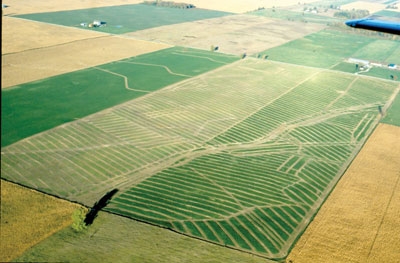
Features
Drainage Management Systems
Ontario to launch best management practices manual
Comprehensive publication developed by a wide array of contributors.
November 7, 2012 By Peter Darbishire
 Ontario agriculture will soon have a long-planned manual for implementing best management practices (BMPs) for cropland drainage.
Ontario agriculture will soon have a long-planned manual for implementing best management practices (BMPs) for cropland drainage.Ontario agriculture will soon have a long-planned manual for implementing best management practices (BMPs) for cropland drainage. As part of a series of more than 30 publications prepared during the course of the last 20 years, the Ontario Best Management Practices program will launch its Best Management Practices Manual for Cropland Drainage in the spring of 2011. It is the culmination of almost two years of committee work by many stakeholders who are either directly involved in crop production or whose work and aims focused on best management practices for subsurface and surface water. The Ontario Best Management Practices Program is a partnership of the Ontario Ministry of Agriculture and Food, Agriculture and Agri-Food Canada and the Ontario Federation of Agriculture.
The publication will be full of technical information and will be extensively illustrated, covering the importance of subsurface and surface drainage design, their benefits to agricultural producers and society in general, while also discussing the impacts of drainage on the environment. The publication delves into how farmers and contractors work together to maximize the benefits while eliminating and reducing the potential for negative impacts. Throughout, it advises how best to achieve these aims. Of note are chapters on how drainage BMPs can assist in reducing both soil erosion and delivery of pollutants to downstream water courses and groundwater while increasing cropland productivity.
Both conventional drainage and some emerging concepts are included.
“Best Management Practices publications are consensus projects. This has been one of our most extensively reviewed publications in the BMP series,” says Ted Taylor, who is a program analyst for OMAFRA and program advisor for the Best Management Practices Publication Program for OMAFRA. “We have had input from a producer group in the Ontario Federation of Agriculture, the Land Improvement Contractors of Ontario, the Drainage Engineers of Ontario, the Drainage Superintendents’ Association of Ontario, Ontario Soil and Crop Improvement Association, the Ontario Farm Environmental Coalition, Ontario’s Conservation Authorities, the Ministries of the Environment, and Natural Resources, Agriculture and Agri-Food Canada, and Fisheries and Oceans Canada as well as the University of Guelph. We have successfully included practical advisory material which is acceptable to all parties and we expect it will be well received as the premium reference for initial planning of drainage systems for cropland in the province.”
The publication’s final format is not yet decided. Many similar publications are more straightforward and are not so extensive. This one might extend to more than 100 pages if it is published in the usual way. Considerations are to produce a shortened print version with components on surface and subsurface drainage, with additional in-depth information for individual sections available on-line. In addition to overviews on how subsurface and surface drainage work, there are detailed sections on the constituents of soil and soil water, the movement of water in the soil and how it moves to surface water bodies or groundwater. The all-important issue of outfall design and maintenance is included, as is communal drainage systems and the legal aspects of drainage.
“We’re looking forward to the final publication,” says Sid Vander Veen, drainage co-ordinator for OMAFRA. “It will be a great tool for planners and especially for those who are not familiar with the intricacies of farm drainage. In many places, the publication will refer users to the Drainage Guide for Ontario, which is the definitive technical guide for cropland drainage system design and installation. In this way, we expect contractors will be able to use it also as a promotional tool that complements the Drainage Guide.”
Print this page